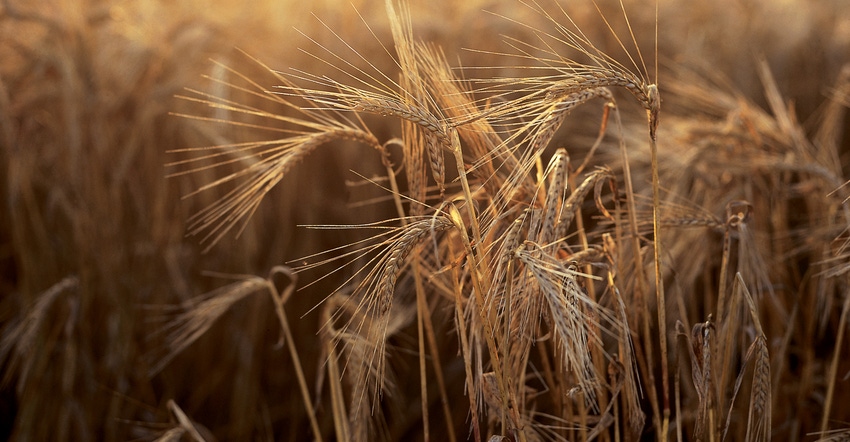February 27, 2020

With somewhere around 1.5 million acres not planted last spring to the intended crops of corn or soybeans due to the extraordinary weather, today, Ohio farmers likely have more acres of cereal rye planted for cover than at any time in previous history. At the same time, cattle producers and livestock owners are facing forage shortages that rival the drought of 2012. Adding insult to injury, the inventory of straw bedding is similarly very short, and will likely remain so until at least midsummer.
With the opportunity for newly harvested forages still two or three months away, and straw even further out, perhaps it’s time to take a look at the opportunity for realizing either feed or bedding from cereal rye — or maybe even one of our other biennial crops.
Feed
Winter wheat, barley, triticale and cereal rye planted in the fall can produce high-quality forage in the spring when harvested in the boot stage. These forages are not equal, though, in their speed of maturity or quality in the soft-dough growth stage. Rye grows and matures faster than the other cereals, making it the ideal choice for double-cropping with corn or corn silage. It’s also the hardest to manage regarding the timing of harvest, so that feed quality isn’t lowered due to plant maturity.
Forage yields of the biennial grass crops commonly grown in Ohio can range from 1.5 to 3 tons of dry matter per acre. If being harvested for feed, forage quality also ranges widely, with declines in quality coming quickly once the plants mature beyond boot stage.
Available crude protein and digestible neutral detergent fiber are the highest at the boot stage and quickly decrease as the crop matures. Rye and barley mature the earliest; barley will maintain quality for a few days longer, although yielding less. While barley tends to have lower dry matter yields, it’s higher in digestibility, with lower lignin than other small grains when harvested in the boot stage.
Wheat tends to yield more dry matter than barley, with perhaps its greatest benefit being that it matures later than other small grains, allowing for a larger harvest window. It also maintains quality into bloom much better than cereal rye, with yields increasing by 50% when cut in bloom instead of boot stage. Historically, cereal rye is the most common small grain used for forage, but it is also the earliest-maturing, declining rapidly in palatability and quality from the boot stage on.
The last small-grain option to discuss is triticale, which is a cross between rye and wheat. In recent years, triticale yield and quality have been increasing with every new variety released. It matures slower than rye, but should still be harvested in the boot stage. Studies have shown it responds to higher nitrogen rates than rye without lodging.
Bedding
In addition to offering high-quality forage, the small grains described above can also provide an alternative for bedding. One option that has gained some popularity is precut rye straw.
There are two options when making precut straw. Both of them take place just after the head emerges in the spring, but before pollination and seed formation.
One common process is to spray the rye with glyphosate, and let it stand in the field as it dries and bleaches yellow. The preharvest interval for cereals on some glyphosate products is seven days between application and grazing or harvest. Once plants are dry, they can be mowed, allowed to lie in the field for a day, and then raked and baled.
The second option is to mow the plants while still green and after heading, but before the anthers and the pollen start to shed. Plants should be mowed and laid out in wide windrows. Usually, rye needs tedding at least twice to get it dry. This option can have many challenges if spring rains and high soil moisture cause delays in drying. This creates the potential to increase slug pressure on the following crop when straw harvest is delayed. Unlike with chemical killing, this method also causes planting challenges if the cover crop straw is not able to be removed due to the weather.
With either option, the best rye straw comes from having a couple tenths of an inch of rain on the rye, thus removing the wax from the plants and allowing them to bleach green to yellow.
While high rates of spring-applied nitrogen can cause lodging, especially with rye, when the N is applied in moderation in a timely fashion, it will also improve yield. Since the goal is not to make grain, 40 to 50 units of nitrogen applied at green-up should be adequate.
Today, whether it’s grass hay or straw bedding, even average-quality forages are commonly bringing prices ranging from $100 to $200 per ton on a dry matter basis. Given weather this spring that allows harvest to happen in a timely manner, turning the grass cover crops presently found in abundance across Ohio into feed or bedding should be considered an opportunity worth exploring.
Hartschuh is the OSU Extension educator for agriculture and natural resources in Crawford County, and Smith is an OSU Extension program assistant for agriculture and natural resources in Fairfield County. Both are members of the OSU Extension Beef Team, which publishes the weekly Ohio BEEF Cattle letter at beef.osu.edu.
You May Also Like




